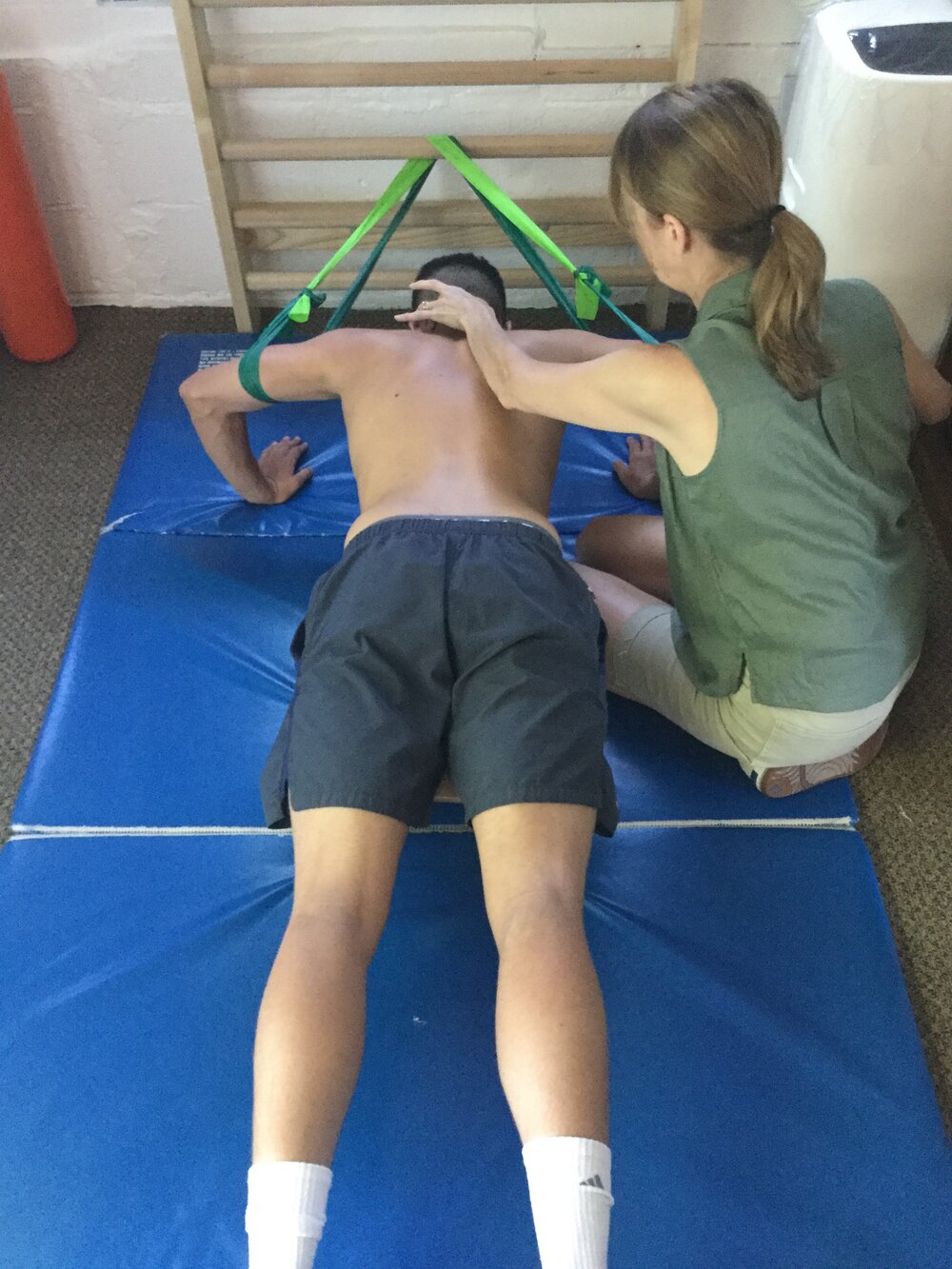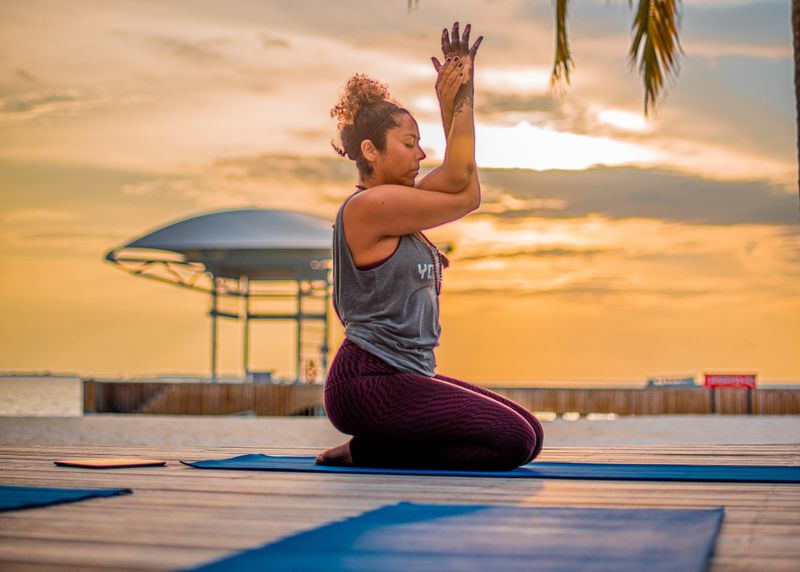
While injuries in yoga can be quite common, they don't necessarily have to prove fatal. These injuries can be avoided in several ways. Here are a few things to avoid: Over-stretching the major muscle groups in your neck and back. You should avoid over-stretching the hips and hamstrings.
Do not overload the major muscles in your back by over-stretching them
It is important to not overextend your major muscle groups when you stretch your back. This can result in micro tears and strained muscles. This is because you should stretch comfortably and not make it painful. You must also avoid holding your breath, which will force the muscles to tighten. You can relax your muscles by taking deep, slow breaths through your nose. Stretching injured muscles too much can slow down healing. Instead, use heat or ice to treat the affected area. Then slowly return the muscle to your stretching routine.

Over-stretching the major muscle groups in your neck
Avoid injury to major muscles in your neck while performing advanced yoga poses. Over-stretching these muscles can result in neck strains or sprains that can lead into chronic pain. There are several ways to avoid neck injuries.
Over-stretching the Hamstrings
Over-stretching the Hamstring muscles during yoga poses can cause injury. Many people stretch their hamstrings too hard, or put too much strain in the inner thighs.
Over-stretching the hips
Tears are a common injury from over-stretching. This injury can happen in yoga during the warm up phase. This is because the heat can be too high to over-stretch muscles in these classes before they are fully warmed. To avoid an injury, participants should only stretch to about 75 percent of the range of motion during the warm-up phase. This will allow muscles time to recover from the exercise before they can engage in strenuous activity.
A range of motion is required to work within this framework
To avoid injuries in yoga, it is important to work within a range. This allows your body and mind to adapt to a range of movements and stresses. This allows you to move with less injury and more mobility. Yoga can also help with agility and endurance.

Case studies
Yoga-related injuries are on the rise. From 2001 to 2014, 29,590 yoga-related injuries were treated in hospital emergency departments. The majority of injuries were strain/sprain. These injuries were more common among younger participants, and less in the older group. Regular yoga practice can increase flexibility and strength in both the young and the old.
FAQ
What are the requirements to practice yoga in a flexible way?
It all depends on which type of yoga you choose. Some yoga styles require you to be very flexible, while others focus on building muscle strength.
Also, different levels of flexibility are required depending on the style of yoga. Beginners might be able to just stretch their arms straight up. Intermediates may only need to reach overhead. Intermediate practitioners may have to bend forward and touch their feet. Advanced practitioners may be required to do deep twists and turns.
What foods should you avoid after doing yoga?
You may experience a decrease in energy levels if you avoid certain foods. It can cause you to feel gassy or cramps in your stomach. You might feel tired after the practice.
What happens if I stop practicing yoga?
It's normal to lose interest in an activity after a while. However, your body may become stiffer if you stop practicing yoga regularly. Stiffness can be caused by lack of exercise, poor posture, or simply aging.
It may become less flexible as you age, so consider retaking a few classes. It's important to maintain a regular routine. Exercise helps strengthen your bones and muscles, so ensure you get enough sleep and eat well.
Is yoga a good option for pain management?
Yoga may be an effective treatment for people who have chronic back pain. It helps them improve flexibility, balance, and strength and reduce stress levels.
As with any exercise program, check in with your doctor before starting a yoga routine.
How long does a yoga class last?
Yoga classes can last from 45 minutes to 90. Some teachers offer shorter, longer, or both sessions throughout the week.
Is it possible to do yoga every day for beginners?
Yoga can be a great way of strengthening your body and stretching. It helps you relax as well as release stress. To start yoga regularly, you don't need to be an expert. For beginners, yoga should be practiced for 20 minutes at least three times per week.
This will be enough time to start. You can gradually increase the amount you spend practicing.
Statistics
- Lock in 25% off your Founding Member rate. (corepoweryoga.com)
- The people in the yoga group were 37 percent more likely to have quit smoking by the end of the 8-week program. (nccih.nih.gov)
- According to the Agency for Healthcare Research and Quality, falls are incredibly common among older adults in nursing facilities. Even the simplest ones can increase the risk of death (24). (healthline.com)
- About one in seven U.S. adults practiced yoga in the past 12 months, according to a 2017 national survey. (nccih.nih.gov)
- According to calorie estimates calculated at Harvard Medical School, the average 125-pound person burns about 120 calories in a half hour of hatha yoga, and a 185-pound person burns about 178 calories in that half hour. (everydayhealth.com)
External Links
How To
Can I do yoga during pregnancy?
Some poses may be unsafe if you're pregnant. You should always consult your doctor before starting a new workout program.
There are still many poses that you can do during pregnancy. These are some suggestions:
-
Women who are pregnant shouldn't lift more than shoulder height. Instead, opt for dumbbells and lightweight resistance bands.
-
Avoid deep twists, as these could put pressure on your belly.
-
Avoid backbends up until you have your baby. They can strain your lower back.
-
Before you deliver your baby, make sure to not sit on your stomach or cross-legged until the delivery.
-
Do not do inverted poses such as headstands or handstands unless your doctor has cleared you.
-
Do not exceed 30 minutes of practice per day.
Yoga can be continued during pregnancy, if you're at the right stage. Your doctor can help you decide when it's time to start practicing yoga.